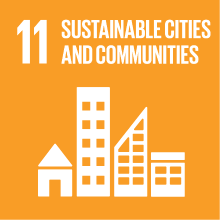ETRUSCOLOGY AND ITALIC ARCHAEOLOGY
- Academic year
- 2025/2026 Syllabus of previous years
- Official course title
- ETRUSCOLOGIA E ARCHEOLOGIA ITALICA SP.
- Course code
- FM0078 (AF:568727 AR:324778)
- Teaching language
- Italian
- Modality
- On campus classes
- ECTS credits
- 6
- Degree level
- Master's Degree Programme (DM270)
- Academic Discipline
- L-ANT/06
- Period
- 2nd Semester
- Where
- VENEZIA
Contribution of the course to the overall degree programme goals
It will be analyzed relationships with etrusco-italic, Mediterranean and European cultures; we pay attention to the chronological items and to material culture.
Our main focus is to improove ability to make chronological references for archaeological evidence of etruscan art and civilisation.
Single item will be selected and specifically oriented, in flipped classroom mode too.
Expected learning outcomes
- To know basic archaeological and technical terminology
- To Know development of settlements and cities in Venetic area
- To Know main theoretical models to analize urban societies
- To know main features of local material culture
2. Ability to apply knowledge and understanding
- To be able to employ archaeological and technical terminology
- To be able to apply theoretical models for the development of Venetic culture and landscape
- To be able to analyze settlements and cities
- To be able to analyze examples of material culture and artistic finds
3. Judgment skills
- To be able to judge and argue hypothesis about venetic contexts
4. Communication skills
- To be able to tell new finds or results of the research with a plain and technical terminology
- To be able to compare themselves with colleagues and tutor, even on.line
5. Learning ability
- To be able to take notes and to share them with colleagues, even on line
- To be able to consult bibliographic references even with a critical point of view
Pre-requirements
Contents
Referral texts
LIVERANI M. 2000, Potere e regalità nei regni del vicino Oriente, in Principi etruschi tra Mediterraneo ed Europa, Catalogo della mostra, Venezia, pp. 3-13.
GRAS M. 2000, Il Mediterraneo in età Orientalizzante: merci, approdi, circolazione, in Principi etruschi tra Mediterraneo ed Europa, Catalogo della mostra, Venezia, pp. 15-25.
D’AGOSTINO B. 2000, La cultura Orientalizzante in Grecia e nell’Egeo, in Principi etruschi tra Mediterraneo ed Europa, Catalogo della mostra, Venezia, pp. 43-53.
COLONNA G. 2000, La cultura Orientalizzante in Etruria, in Principi etruschi tra Mediterraneo ed Europa, Catalogo della mostra, Venezia, pp. 55-65.
TORELLI M. 2000, Le regiae etrusche e laziali tra Orientalizzante e Arcaismo, in Principi etruschi tra Mediterraneo ed Europa, Catalogo della mostra, Venezia, pp. 67-77.
TORELLI M. 2014 (o altre edizioni), L’arte degli Etruschi, Bari, pp. 17-74.
NASO A. 2012, Gli influssi del Vicino Oriente sull’Etruria nell’VIII-VII sec. a.C.: un bilancio, in
BELLELLI V., Le origini degli Etruschi. Storia Archeologia Antropologia, Roma 2012, pp. 433-453.
TORELLI M. 2014 (o altre edizioni), L’arte degli Etruschi, Bari, pp. 17-74.
[Torelli M. 1981 (qualsiasi successiva edizione), Storia degli Etruschi, Bari, capitoli 3 e 4.]
For specific topics:
S. BOURDIN, O. DALLY, A. NASO, CH. SMITH 2021, The orientalizing cultures in the Mediterranean, 8th-6th Century B.C. Origins, cultural contacts and local develpoments: tha case of Italy, Mediterranea Supplementi n.s. 1, 2021, Roma.
In particolare i contributi:
C. PELLEGRINO, L’”orientalizzante” come processo storico: il caso della Campania, pp. 253 ss.
M. SANNIBALE, L’Etruria e il Mediterraneo visti dalla tomba Regolini -Galassi, pp. 185 ss.
A. ZIFFERERO, M. MILLETTI, E. ROSSI, Le necropoli di Marsiliana d’Albegna: architettura, rituale funerario e cultura materiale, pp. 107 ss.
P. VON ELES, Villanoviano e Orientalizzante a Verucchio, pp. 93 ss.
S. SANTOCCHINI GERG, L’orientalizzante nel Bolognese, pp. 63 ss.
Assessment methods
Type of exam
Grading scale
More specifically:
it is considered sufficient (18-22/30) the test in which the student is able to identify at least half of the images submitted for examination; frame the subjects, describe the structural features and characteristics of the material and imported culture with even generic chronological references.
The test is considered good (22-26/30) if the student is able to identify more than half of the images submitted for examination, indicate their cultural context, identify the places and productions and hypothesise a chronology;
The test is considered very good (27-30/30) if the student is able to identify all the images submitted for examination, frame them chronologically and culturally and provide a critical reading of the contexts within the framework of pre-Roman Italy and Etruria in its territorial variations.
The test is considered excellent (30/30 cum laude) if the student is able to identify all the images submitted for examination, frame them culturally and chronologically and provide a personal and critical re-elaboration of the significance of individual objects or contexts in the development of Etruscan civilisation and pre-Roman Italy with a view to a historical and social reconstruction.
Teaching methods
Lectures and exercises
On.line papers for specific topics.
Flipped classroom
2030 Agenda for Sustainable Development Goals
This subject deals with topics related to the macro-area "Cities, infrastructure and social capital" and contributes to the achievement of one or more goals of U. N. Agenda for Sustainable Development


